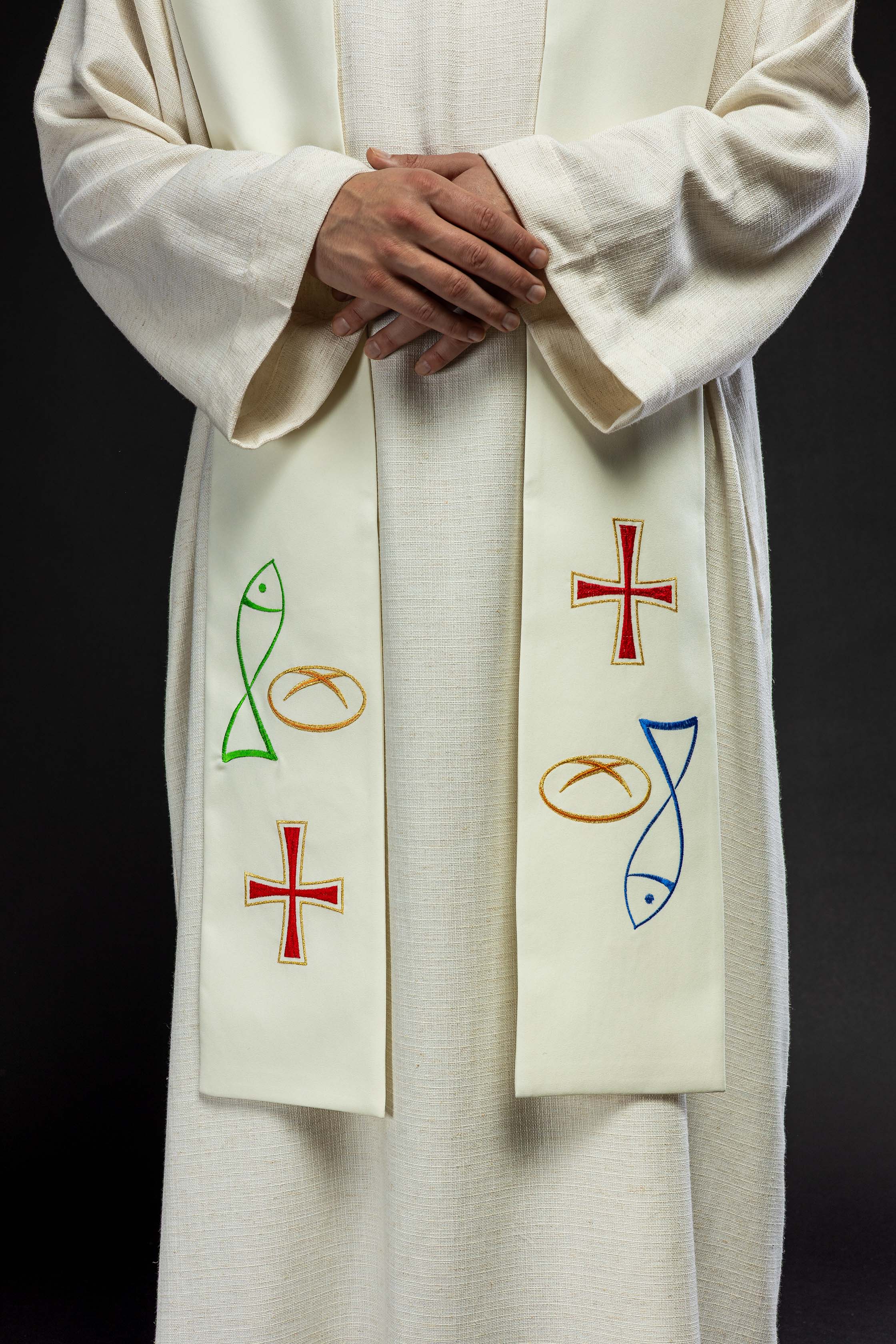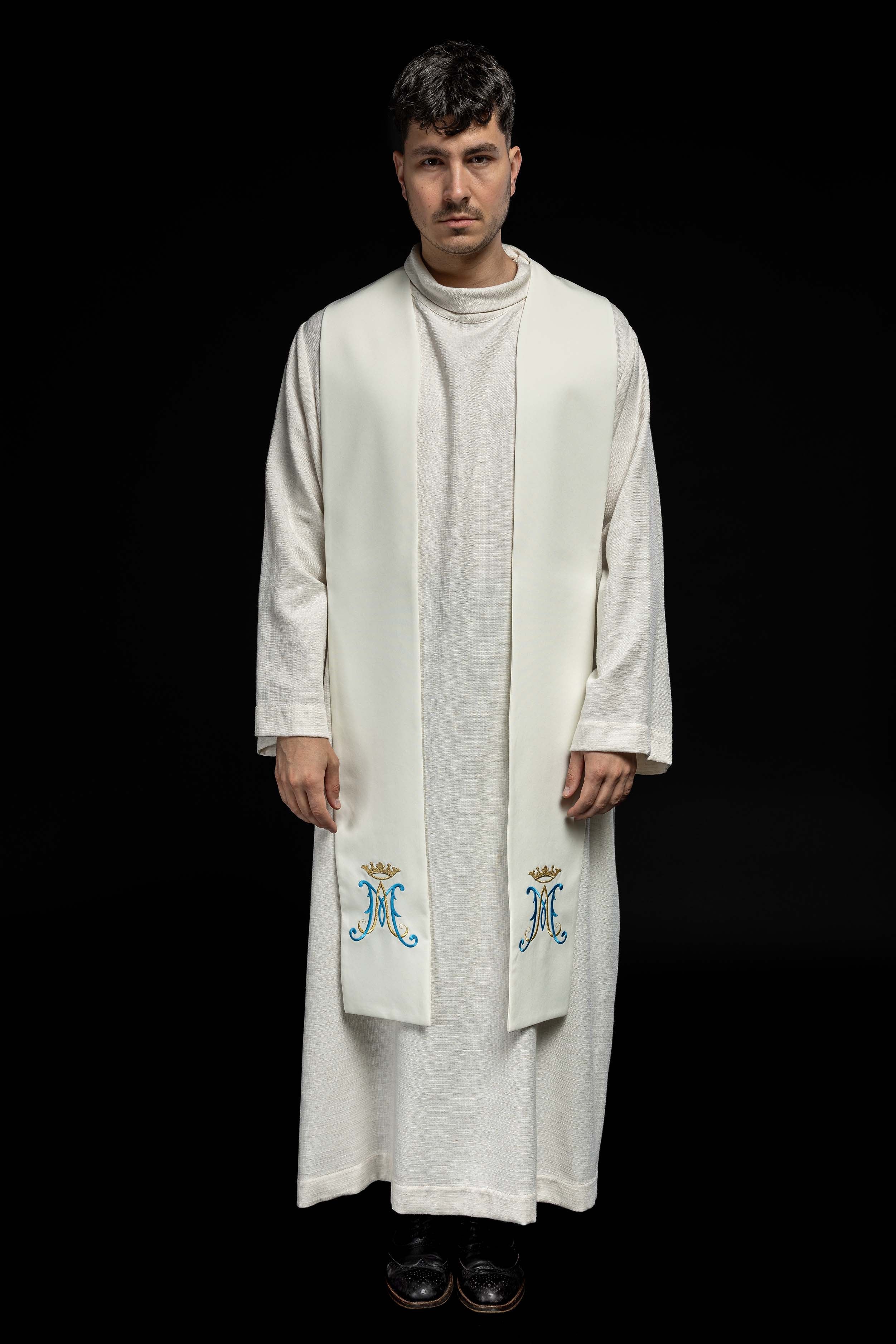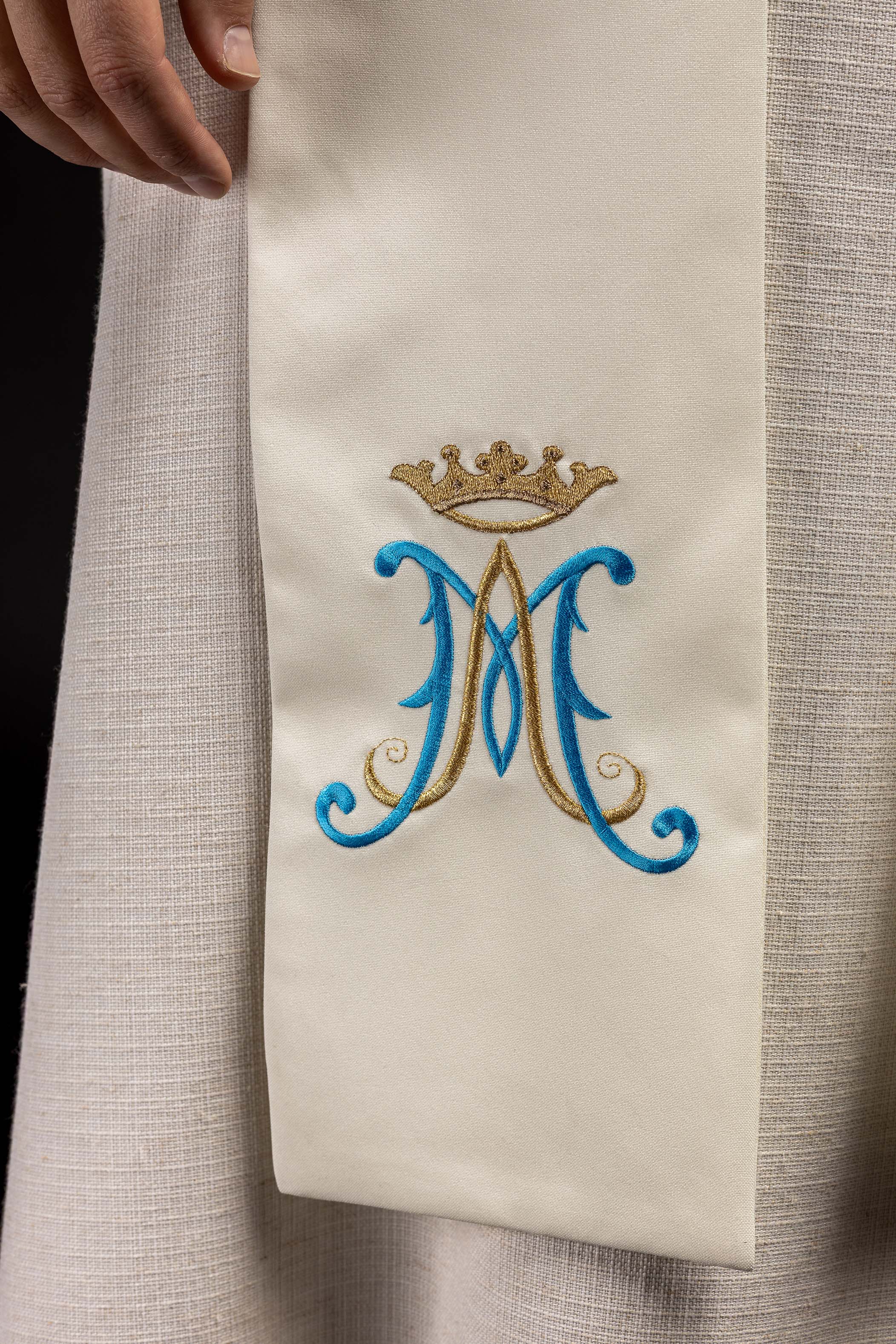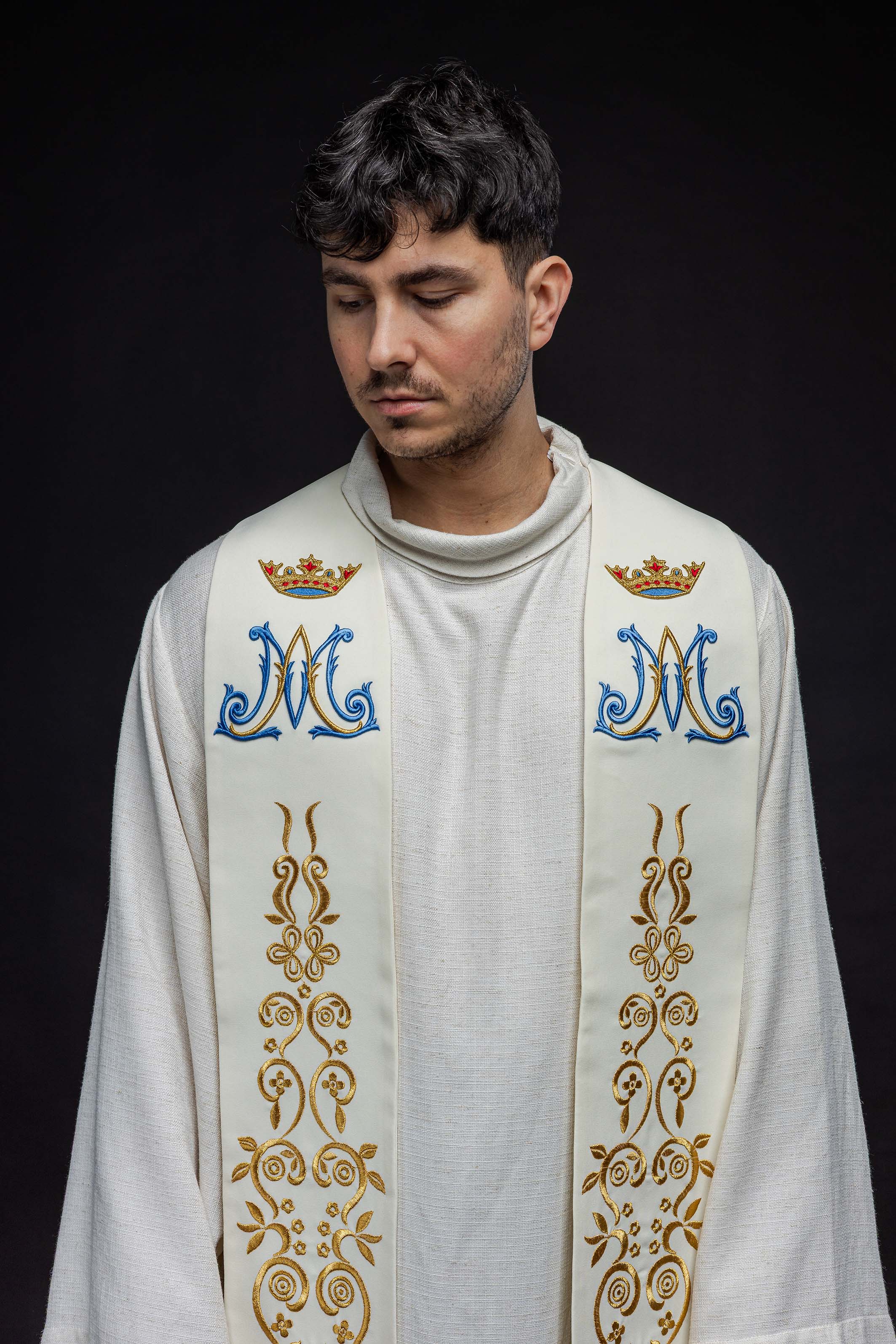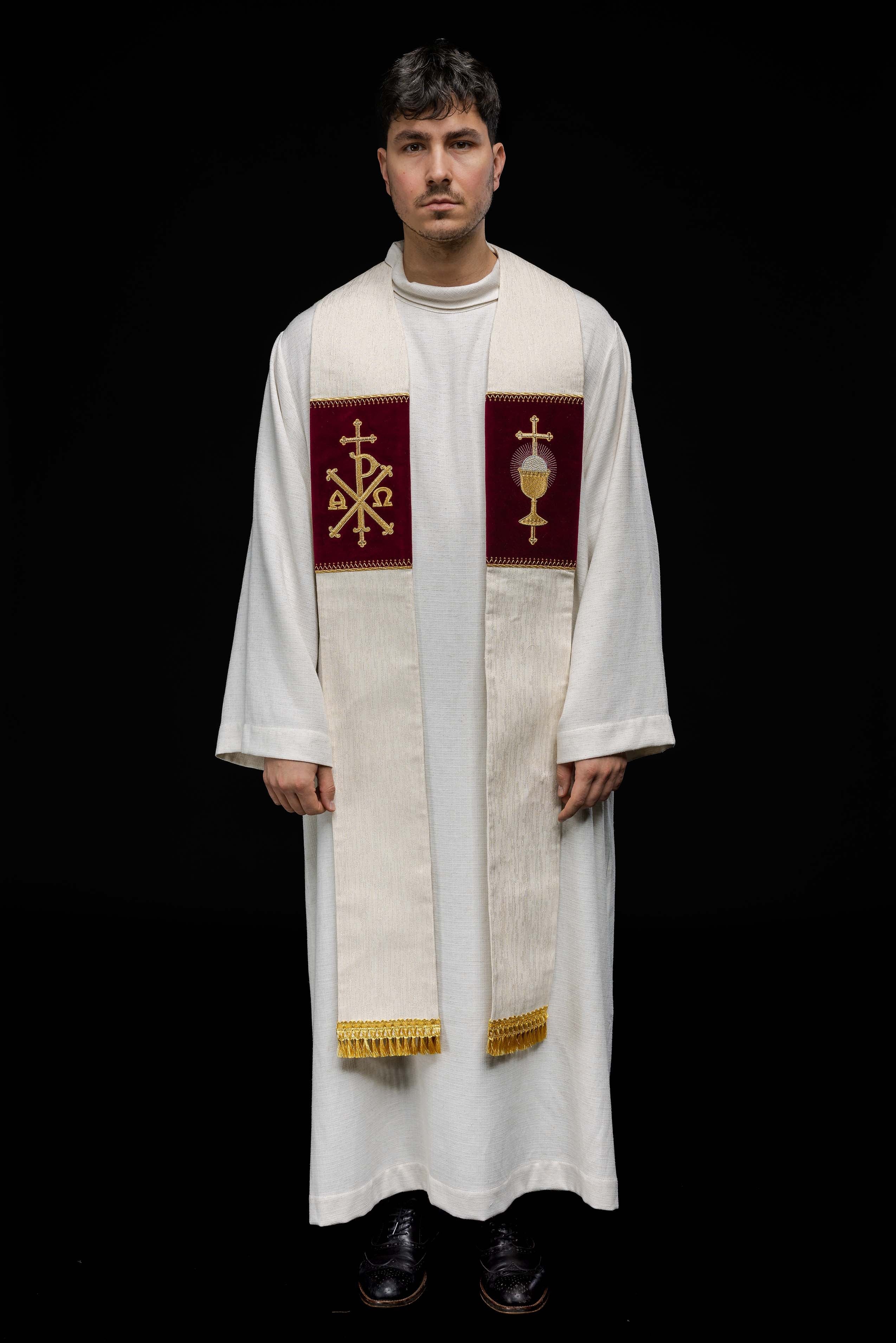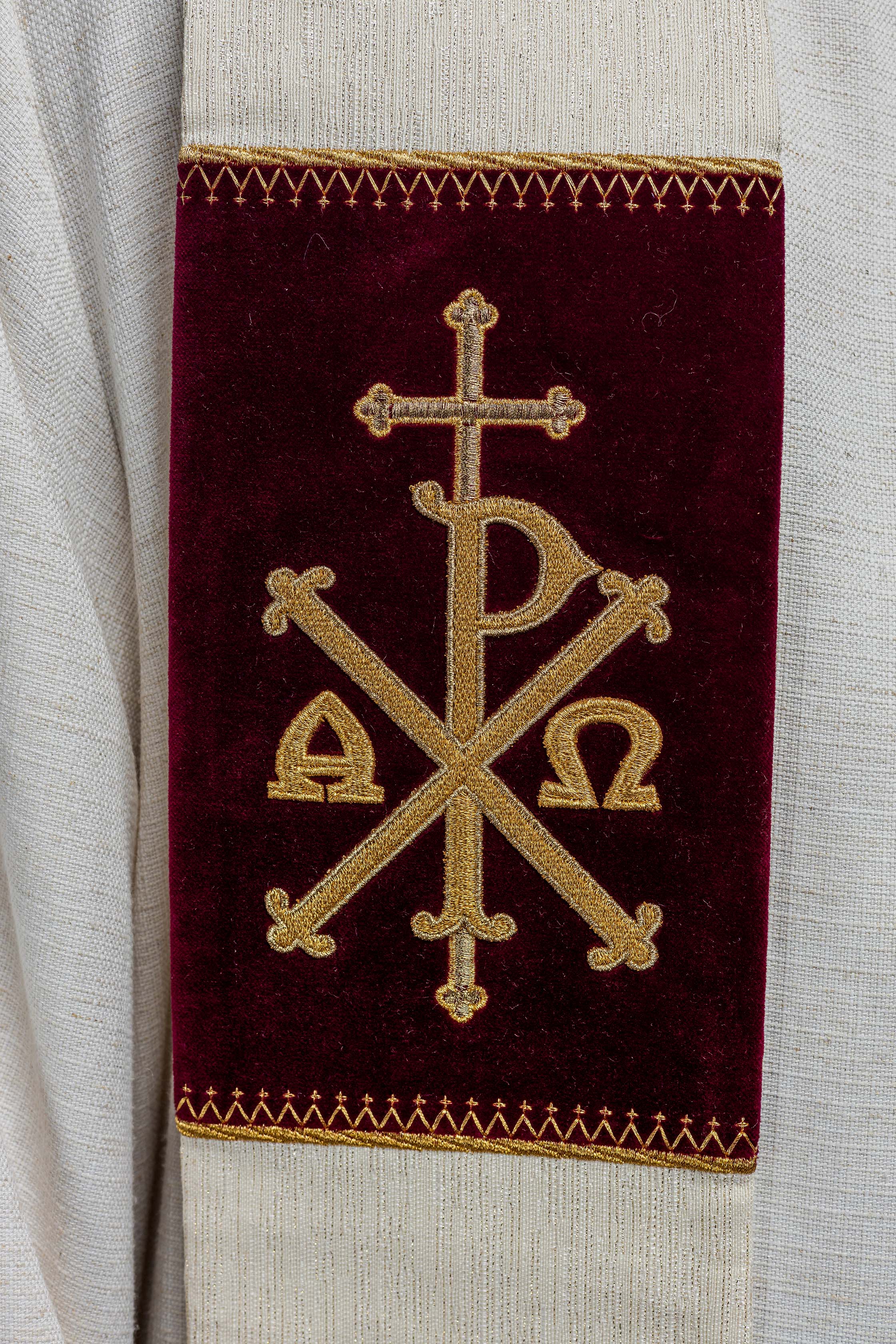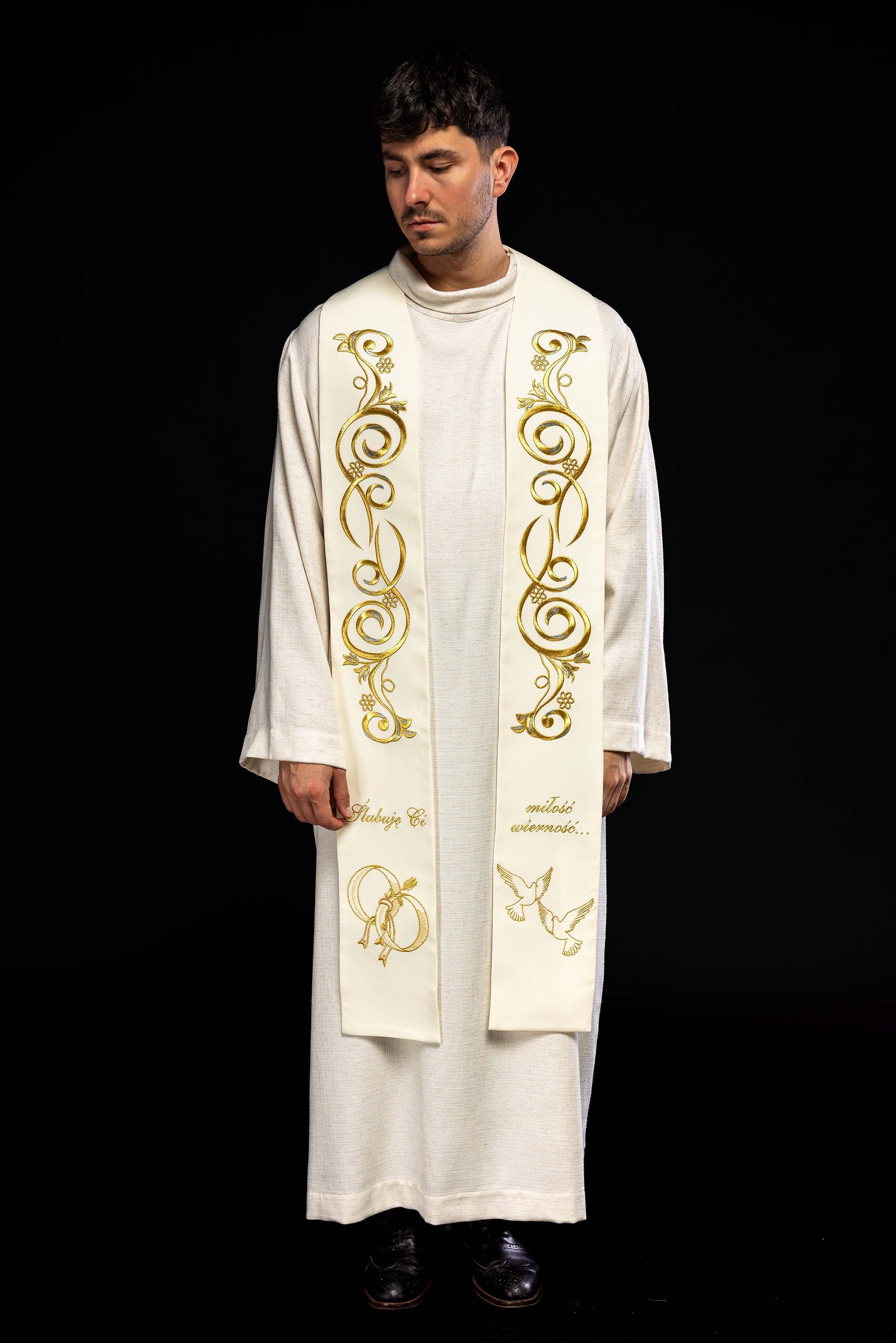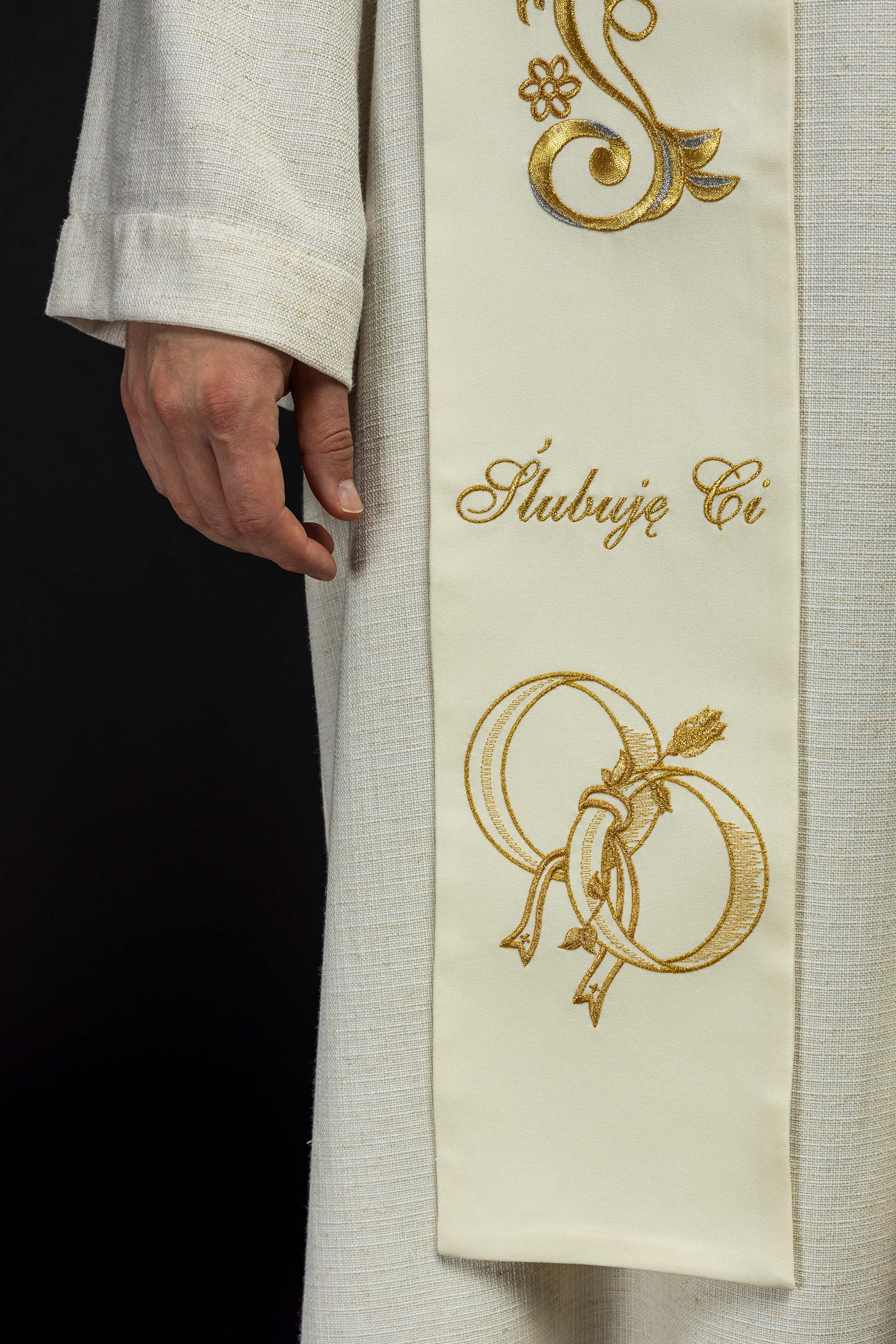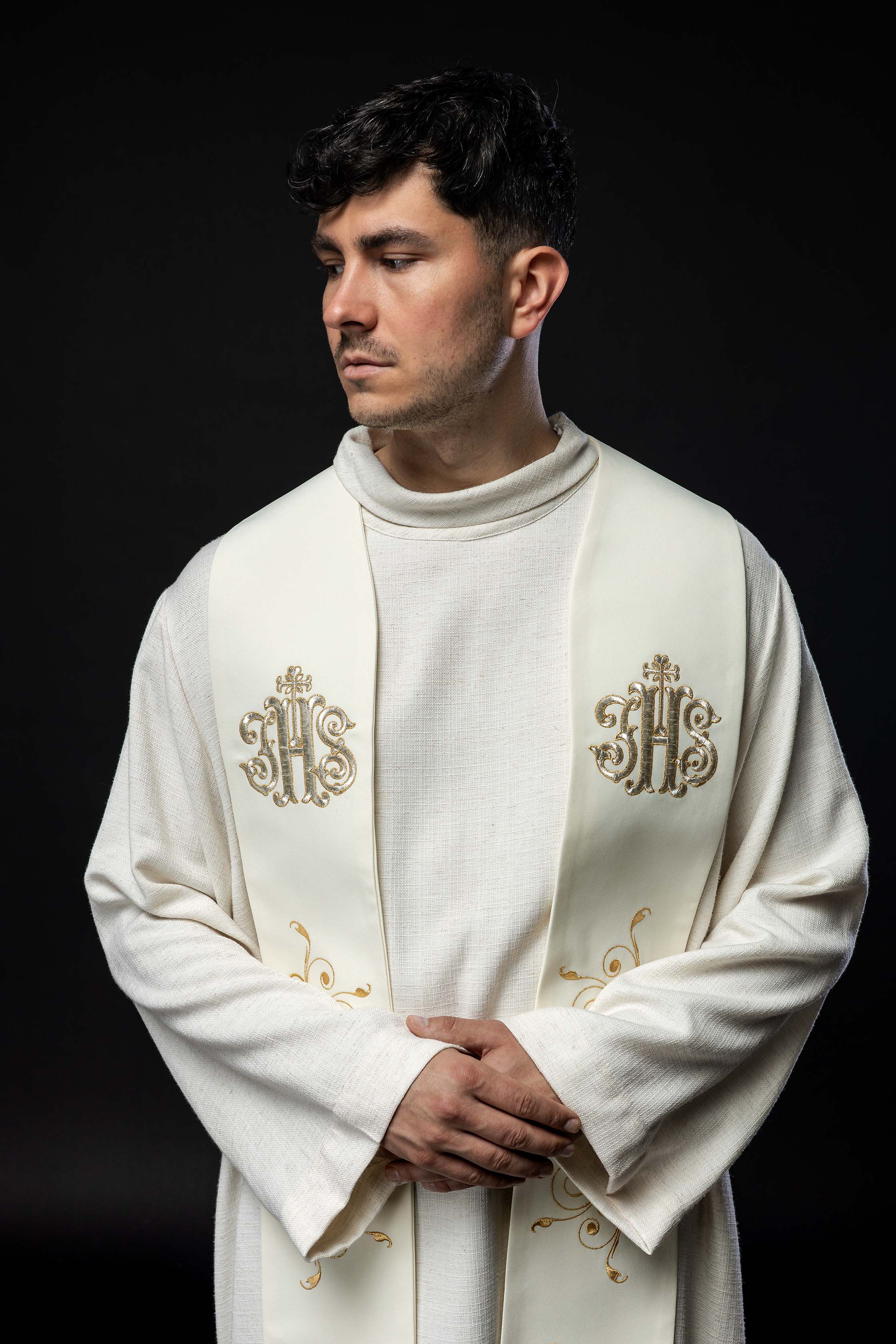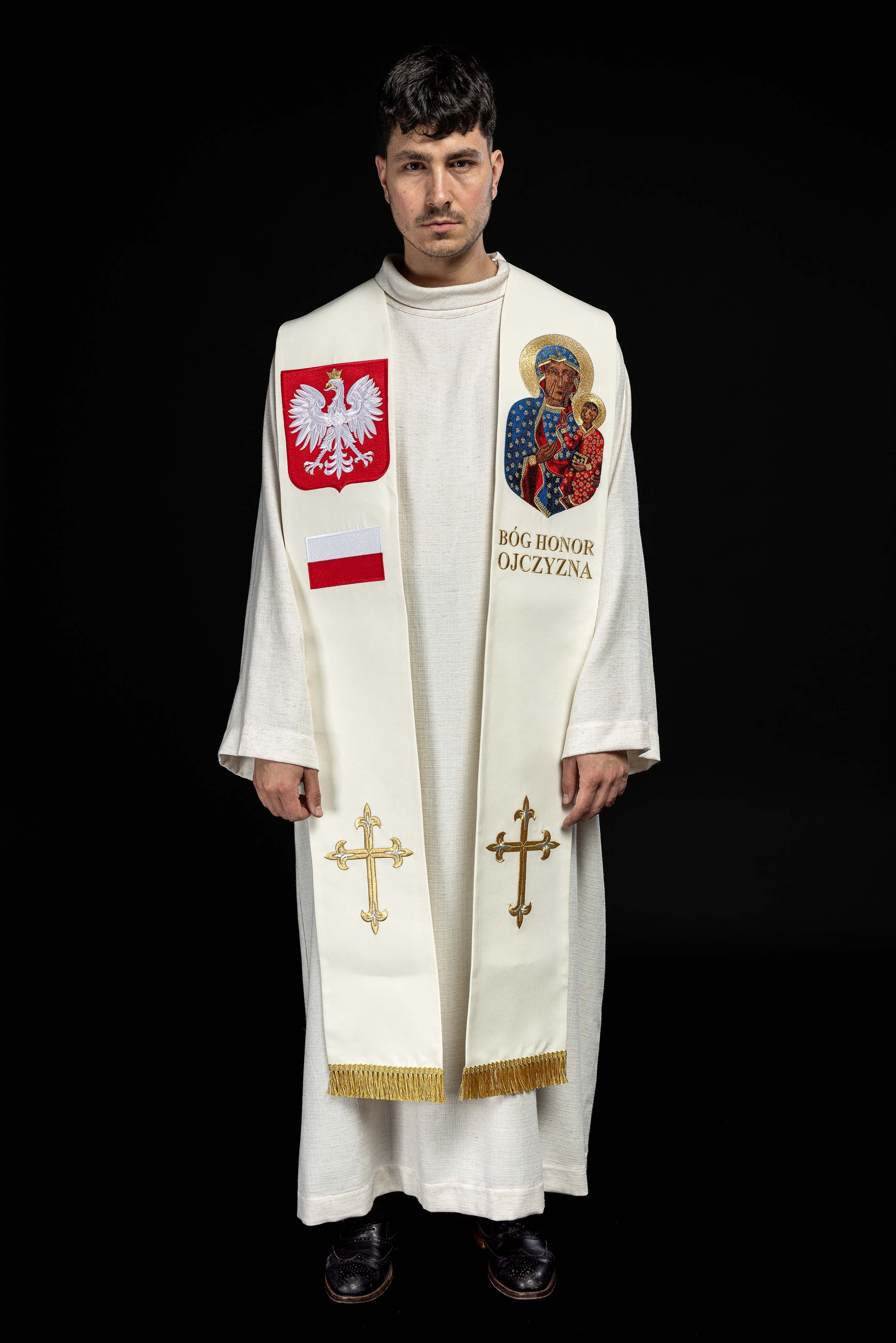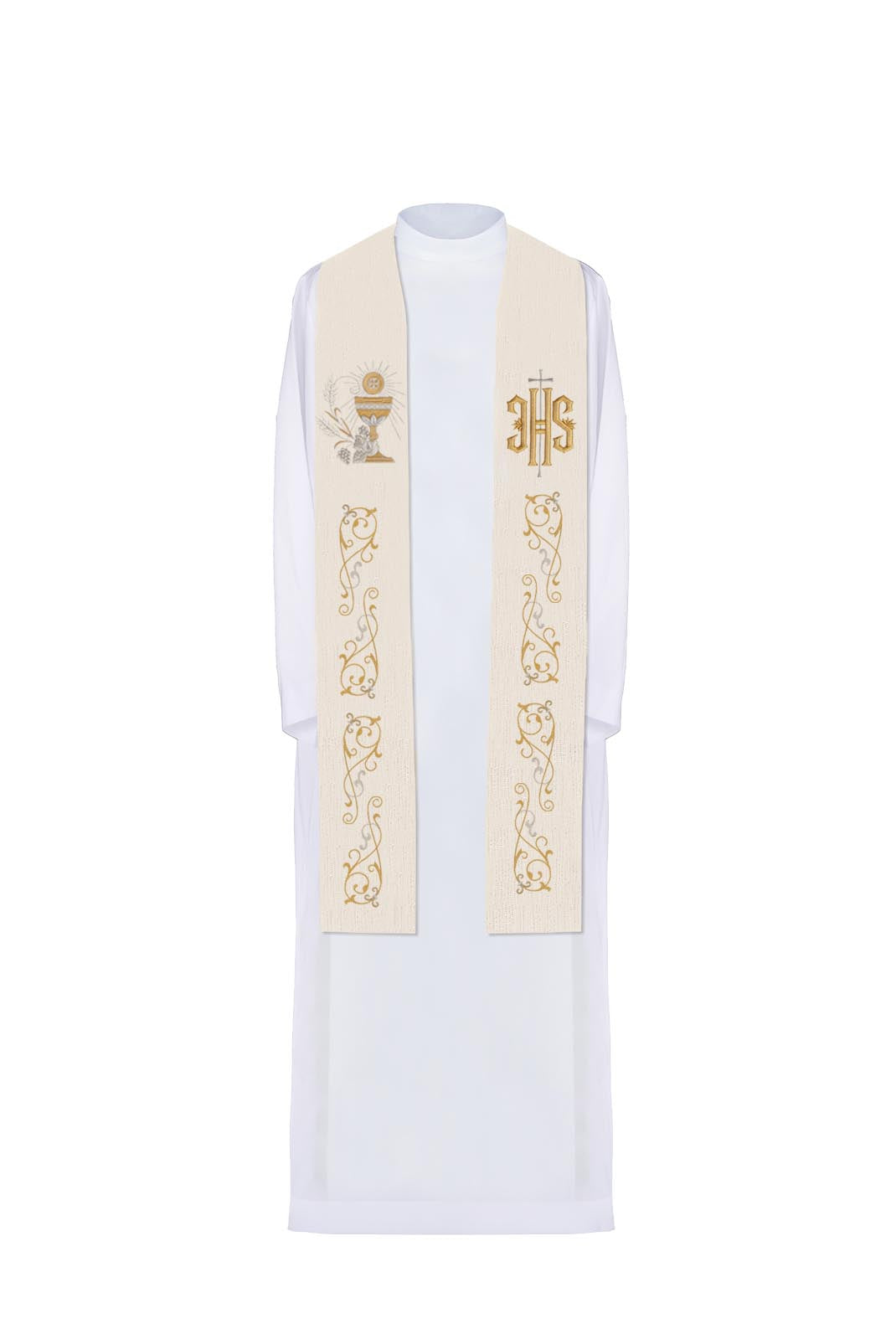Ecru embroidered stole with the Sacred Heart of Jesus
Sale price$102.72
Regular price$205.44
Embroidered priestly stole with Bread Cross Fish motif in ecru
Sale price$42.24
Regular price$60.16
Ecru priestly stole with chalice IHS
Sale price$84.48
Regular price$120.64
Ecru Marian priestly stole
Sale price$54.72
Regular price$78.08
Embroidered stole with crosses red
Sale price$185.92
Regular price$265.60
Stole embroidered with the image of the Merciful Jesus
Sale price$69.44
Regular price$99.20
Ecru priestly stole embroidered with a Cross
Sale price$59.52
Regular price$85.12
Priest stole in Ivory with embroidered gold JHS and tassels
Sale price$185.92
Regular price$265.60
Embroidered ecru stole
Sale price$71.68
Regular price$102.08
Embroidered priestly stole with Fish motif in ecru
Sale price$52.16
Regular price$74.56
Marian stole richly embroidered
Sale price$79.36
Regular price$113.28
Priestly stole with grape and wheat embroidery in ecru
Sale price$64.64
Regular price$92.16
Embroidered priestly stole with Marian motif and crown in ecru
Sale price$128.96
Regular price$184.32
Ecru embroidered Marian priestly stole
Sale price$121.60
Regular price$173.76
Ecru Jerusalem Cross embroidered priestly stole
Sale price$54.72
Regular price$78.08
Ecru embroidered IHS stole
Sale price$49.60
Regular price$71.04
Modern green liturgical stole with three gold crosses and tassels
Sale price$185.92
Regular price$265.60
Embroidered jacquard stole with cross motifs ecru
Sale price$171.84
Regular price$245.12
Embroidered stole with the image of the Holy Family for Christmas
Sale price$143.36
Regular price$205.12
Embroidered stole with the image of the Holy Family for Christmas
Sale price$143.36
Regular price$205.12
IHS green embroidered stole
Sale price$185.92
Regular price$265.60
Stole embroidered with the image of St. Florian
Sale price$160.32
Regular price$229.12
Stole with embroidered Lamb of God and JHS symbol
Sale price$84.16
Regular price$120.32
Stole with embroidered Eucharistic Chalice and PAX
Sale price$84.16
Regular price$120.32
Priestly stole Chalice, Wheat, and Grapes in ecru
Sale price$52.16
Regular price$74.56
Ecru priestly stole embroidered with IHS and grapes
Sale price$59.52
Regular price$85.12
Ecru embroidered IHS stole
Sale price$89.28
Regular price$127.68
Embroidered priestly stole with cross and grapes in ecru
Sale price$79.36
Regular price$113.28
Priestly stole Jesus, I Trust in You in ecru
Sale price$89.28
Regular price$127.68
Ecru priestly stole embroidered with IHS on a cross
Sale price$86.72
Regular price$124.16
Ecru priestly stole with IHS embroidery
Sale price$63.68
Regular price$127.68
Ecru priestly stole embroidered with Alpha and Omega
Sale price$84.48
Regular price$120.64
Ecru priestly stole embroidered with a Cross
Sale price$92.16
Regular price$184.32
Long stole with embroidery
Sale price$85.12
Regular price$121.60
Ecru priestly stole embroidered with a Cross
Sale price$84.48
Regular price$120.64
Ecru embroidered Wedding stole
Sale price$72.64
Regular price$145.28
Ecru embroidered stole with IHS
Sale price$89.28
Regular price$127.68
Embroidered Mary stole
Sale price$200.96
Regular price$286.72
Priest's stole with embroidered IHS and Eucharistic chalice ecru
Sale price$144.00
Regular price$205.44
Stole with embroidery JUBILEE ROME 2025 in Ecru
Sale price$85.44
Regular price$121.92
Ivory colored stole with gold crosses embroidery
Sale price$185.92
Regular price$265.60
Simple priest stole in ivory with ichthys and PAX embroidery
Sale price$100.16
Regular price$143.04



